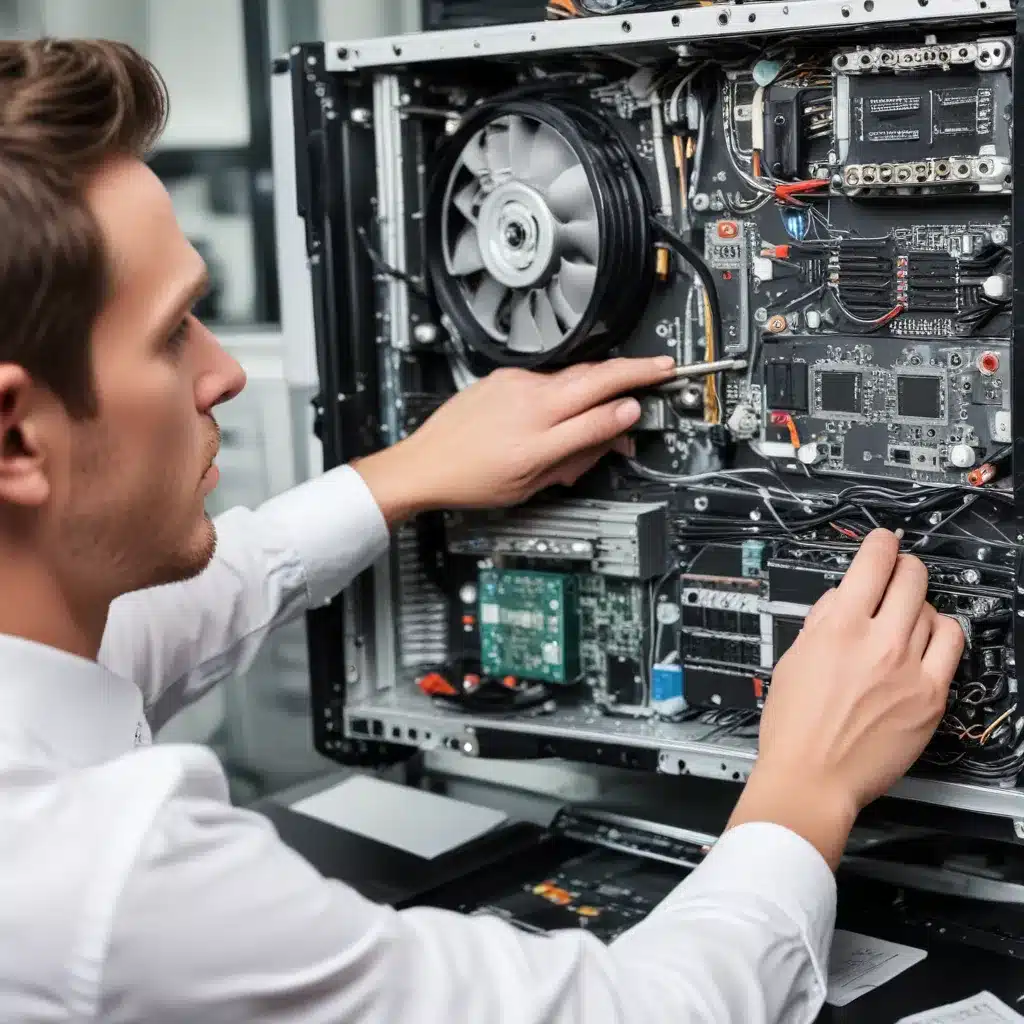
As a seasoned IT professional, I understand the critical importance of software maintenance and repair in ensuring the smooth and uninterrupted operation of your technological infrastructure. In today’s fast-paced business landscape, where technology has become the backbone of almost every organization, the need for effective software management cannot be overstated.
Understanding Software Maintenance
Software maintenance refers to the activities undertaken to keep your software systems running efficiently, addressing issues, and implementing updates and improvements. This encompasses a wide range of tasks, including:
- Corrective Maintenance: Addressing bugs, errors, or malfunctions that arise in your software systems.
- Preventive Maintenance: Proactively maintaining your software to prevent potential issues and ensure optimal performance.
- Adaptive Maintenance: Updating your software to adapt to changes in the technological landscape, such as new hardware, operating systems, or industry regulations.
- Perfective Maintenance: Enhancing your software’s functionality, user experience, or performance, based on evolving business requirements.
Effective software maintenance is crucial for several reasons:
- Reliability and Uptime: Regular maintenance and prompt repairs help ensure your software systems remain reliable and continuously available, minimizing costly downtime.
- Security and Compliance: Timely software updates address security vulnerabilities and help maintain compliance with industry regulations and standards.
- Enhanced Productivity: Well-maintained software runs more efficiently, boosting user productivity and streamlining business operations.
- Cost Savings: Proactive maintenance and early issue resolution can prevent the need for more expensive repairs or system replacements down the line.
- Longevity: Properly maintaining your software can extend its useful lifespan, maximizing the return on your technology investments.
Establishing a Comprehensive Software Maintenance Plan
Developing a robust software maintenance plan is essential for any organization. This plan should encompass the following key elements:
Preventive Maintenance Strategies
Preventive maintenance focuses on proactive measures to maintain the health and performance of your software systems. This includes:
- Scheduled Updates and Patches: Regularly applying software updates and security patches to address known issues and vulnerabilities.
- System Monitoring and Diagnostics: Continuously monitoring your software systems to identify potential problems before they escalate.
- Backup and Disaster Recovery: Implementing reliable backup procedures and disaster recovery plans to protect against data loss or system failures.
Corrective Maintenance Processes
Corrective maintenance involves addressing software issues and malfunctions as they arise. This includes:
- Incident Response and Troubleshooting: Establishing efficient processes for reporting, diagnosing, and resolving software-related incidents.
- Change Management: Implementing a structured approach to managing software changes, updates, and upgrades to minimize disruptions.
- Documentation and Knowledge Sharing: Maintaining comprehensive records of software issues, solutions, and best practices to improve future problem-solving.
Adaptive and Perfective Maintenance Initiatives
Adapting your software to changing business needs and technological advancements is crucial for maintaining a competitive edge. This includes:
- Technology Roadmapping: Regularly reviewing your software infrastructure and planning for future upgrades, integrations, or replacements.
- User Feedback and Continuous Improvement: Actively seeking user input and continuously enhancing your software’s functionality and user experience.
- Scalability and Flexibility: Designing your software architecture to accommodate growth and adapt to evolving requirements.
Leveraging Maintenance Software and Tools
To streamline your software maintenance efforts, consider investing in specialized tools and technologies that can help automate and optimize your processes. Some key software solutions to consider include:
- Computerized Maintenance Management Systems (CMMS): These platforms enable centralized management of maintenance tasks, work orders, asset tracking, and reporting.
- Remote Monitoring and Diagnostics Tools: Solutions that provide real-time visibility into your software systems’ performance and allow for proactive issue identification and resolution.
- Configuration Management Platforms: Tools that manage the versioning, deployment, and change control of your software components.
- Ticketing and Incident Management Systems: Systems that facilitate the efficient reporting, prioritization, and resolution of software-related incidents and support requests.
By leveraging these specialized tools and technologies, you can enhance the effectiveness, efficiency, and responsiveness of your software maintenance program.
Embracing a Culture of Continuous Improvement
Maintaining the health and longevity of your software systems requires more than just technical expertise. It also involves cultivating a organizational culture that values proactive maintenance, continuous learning, and a commitment to excellence.
Encourage your IT team to stay up-to-date with the latest software maintenance best practices, industry trends, and emerging technologies. Provide ongoing training and professional development opportunities to ensure your staff has the skills and knowledge to effectively manage your software infrastructure.
Furthermore, foster a collaborative environment where users, developers, and IT professionals work together to identify improvement opportunities, share knowledge, and implement innovative solutions. This collaborative approach can lead to more effective software maintenance practices, enhanced user satisfaction, and a more resilient technological ecosystem.
Conclusion
In the ever-evolving world of technology, the role of software maintenance and repair cannot be overstated. By implementing a comprehensive maintenance plan, leveraging specialized tools and technologies, and cultivating a culture of continuous improvement, you can ensure that your software systems remain reliable, secure, and adaptable to your organization’s changing needs.
As an experienced IT professional, I encourage you to prioritize software maintenance as a critical component of your overall technology strategy. Investing in proactive maintenance not only safeguards the health of your software infrastructure but also unlocks opportunities for increased productivity, cost savings, and long-term competitive advantages.
Remember, the IT Fix team is here to support you every step of the way. If you have any questions or need assistance in developing or refining your software maintenance program, don’t hesitate to visit our website or reach out to our experts. Together, we can ensure your technology continues to drive your business forward.












